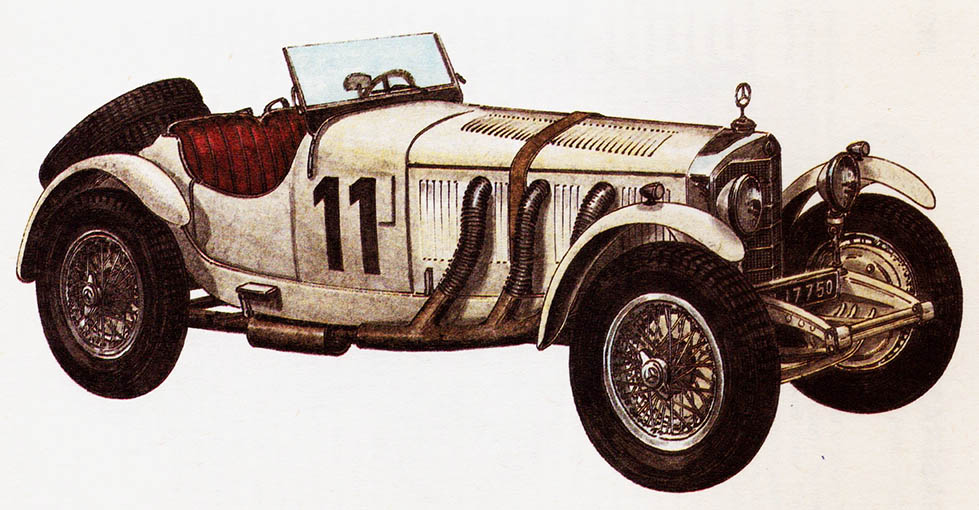MERCEDES-BENZ SSK – year 1930
Daimler Benz AG, Stuttgart, Germany.
Despite, that year 1930 it was marked by the victories of Bugatti cars, the Mercedes-Benz brand won success at the Irish Grand Prix, where Rudolf Caracciola won with average speed 139,0 km/h, masterfully driving this heavy one, but a powerful car.

Daimler Benz AG, Stuttgart, Germany.
Mercedes-Benz SSK was founded in 1928 year, and a year later it was sold to players. Initially, he mostly participated in mountain races, but for a year 1929, when the SS model was produced mainly with a passenger body, he also appeared on the Grand Prix tracks. Compared to the type SS, it had a shortened wheelbase z 3400 do 2950 mm, hence the designation SSK (Super sport in short). The power of a six-cylinder engine with a capacity 7063 cm3 (0 100 x 150 mm) gradually grew from 125,1 kW (170 KM) [165,6 kW(225 KM)] w 1928 do 138,5 kW (180 KM) [184,0 kW (250 KM)] w 1929 year, a year 1930 was even in the factory versions 176,6 kW (240 KM) by 2900 RPM [220,8 kW (300 KM) by 3400 RPM]. The values in square brackets refer to the power measured with the compressor in the engine. The engine was reaching its maximum torque 700 Nm at 2000 RPM. As intended and depending on the type of race track, different permanent gears were used in the drive axle and gearbox. The maximum speed was 235 km/h. The aerodynamic drag was reduced by lowering or removing the headlights with fenders. Thanks to this, the acceleration also changed and the car increased its speed from 0 do 100 km / h in the time from 10 do 18 seconds.
Total in years 1928-1934 produced approx 300 cars of the S types, SS, SSK and SSKL. In years 1929 i 1931 the best rider driving the SSK model was Rudolf Caracciola, who finished second in the difficult Monaco Grand Prix race (1929), won the British Tourist Trophy (1929) and the Irish Grand Prix (1930). In year 1931 Caracciola won the SSK Mercedes in the famous Italian Mille Miglia race, thus breaking the streak of Italian players. Caracciola, along with mechanic Wilhelm Sebastian, was the last of the two hundred participants and the length of the course 1639,7 km traveled with record average speed 100,5 km/h, with an average on the Brescia-Bologna section 154 km/h. W 1931 The year Caracciola also won most of the mountain races, becoming the mountain champion of Europe. In the same year, a lighter version of the SSK model was created, designated as SSKL.